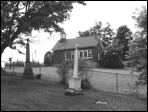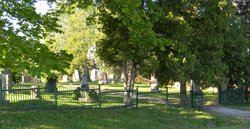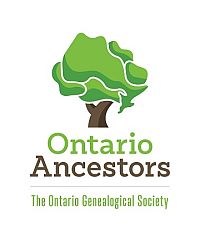Hamilton_Carluke Red Brick Church Cemetery – Revised to 2009
$5.00
Digital Download Only
Description
CEM 107-Rev_carluke_red_brick_church_cemetery
Other Known Names: Carluke Red Brick Church Cemetery, Knox Presbyterian Cemetery
Street Address: Carluke Road West
Location: Lot 38, Concession 6, Ancaster Type of Cemetery: Religious (Presbyterian)
Responsible Agency: St. Paul’s Presbyterian Church Board Status for Burials: Open for burials Plot Plan: None Size: Small, 130 monuments
Fencing: Chain link, iron railings and hedgerow Monument Types: flat, upright and monument Monuments of: Marble and granite
Date of Opening: 1855
History:
The first Presbyterian Church in the Carluke area was built in 1846 and in 1850, a permanent building known as White Church was completed. However, during the same year, there was a split amongst Presbyterians, and a small group of members removed themselves from the congregation. In 1854, Mr. Andrew Sloss sold half an acre of land to this group of Presbyterians who wished to establish their own congregation and in 1855, built Knox Church, commonly known as the Red Brick Church. This year also saw the first interment in the cemetery.
In 1886 the Presbyterian churches of Carluke reunited and in 1898, the Red Brick Church was demolished. The cemetery is still in use, and is administered by the Presbyterian Church of Carluke, known as St. Paul’s.
The history or the Carluke Church dates back to May 12, 1845, soon after the first settlement, when the settlers, desirous of religious instruction, called a meeting in the log school house in the 6th concession. The Rev. Mark Y. Stark of Dundas, and of St,Andrew’s in Ancaster, opened the meeting with a prayer, and then described the position of the Presbyterian Church in Canada at the time. It was then moved by Mr. John Mitchell, and seconded by Mr. Joseph Douglas, that a Presbyterian congregation be organized in this settlement (Carluke), and that a committee be appointed to raise funds and to arrange with the Presbytery of West Flamborough for an occasional ministration of the Word. Accordingly, an occasional supply was arranged, but in the Spring of 1846, Carluke joined with the Presbyterian Church at Caledonia and called the Rev. Andrew Ferrler, D.D. to be their minister. He was inducted at Caledonia on April. 23, 1846, there being a Carluke deputation present to welcome him as their minister as well.
In December, 1850, the first church called the White Church, erected on land given by John Walker, was formally opened. Before this they had met in the log school house and called themselves the United Presbyterian Church of Ancaster East, That same year (1850), the schism of 1844 hit the Carluke congregation and, as many in other churches had done in 1814, several of the Carluke members broke away from the Established Church (of Scotland) to join the Free Presbyterian Church of Canada, The dissenters returned to worship in the log school house until 1855 when they erected Knox Presbyterian Church on land purchased from Andrew Sloss. Here, the Rev,James Black was their leader for over thirty years.
In 1866, the United Presbyterian Church of Ancaster East (commonly called the White Church) adopted the name Erskine Church, and they built a drive shed (an essential in those horse and buggy days) on land leased in 1865 from Mrs. Alexander MacDonald (formerly Mrs. Allan Moffat).
In 1886, the two churches reunited, and thereafter held morning services in Erskine (the White) Church, with afternoon worship in Knox (the Red Brick) Church, The Rev John Lees became minister in 1855, and the Rev. William Walker In 1870. In 1898, a manse was built and the Rev. Albert E. Doherty became its first occupant in l889,
In 1898, the two original churches were torn down, and a new one, St. Paul’s, was erected half way between them on the present site adjoining the manse. This church was destroyed by fire in 1924, and was replaced by the present structure, which was given a new entrance in 1945. A church parlour and conveniences were added in 1961.




